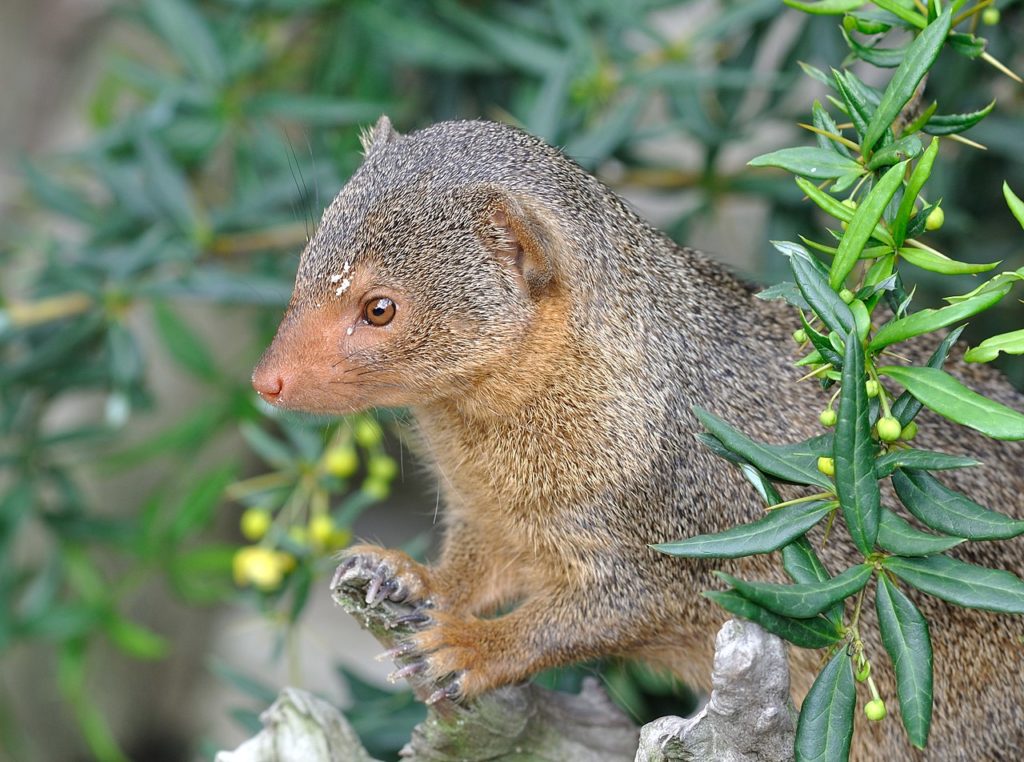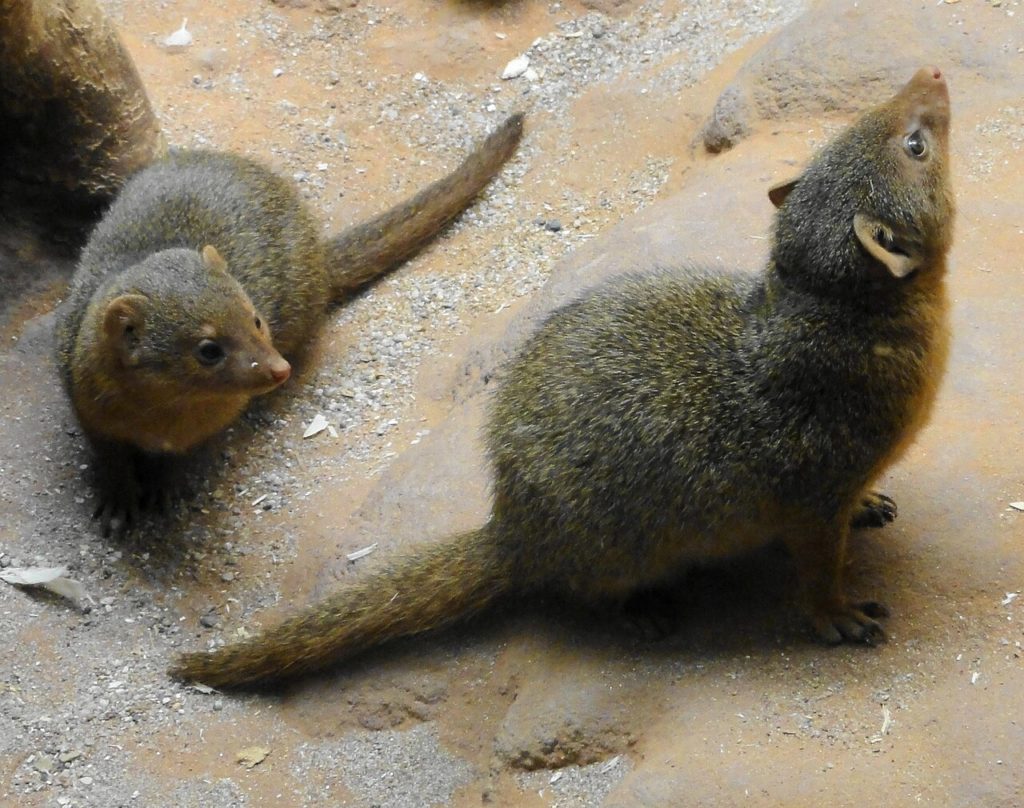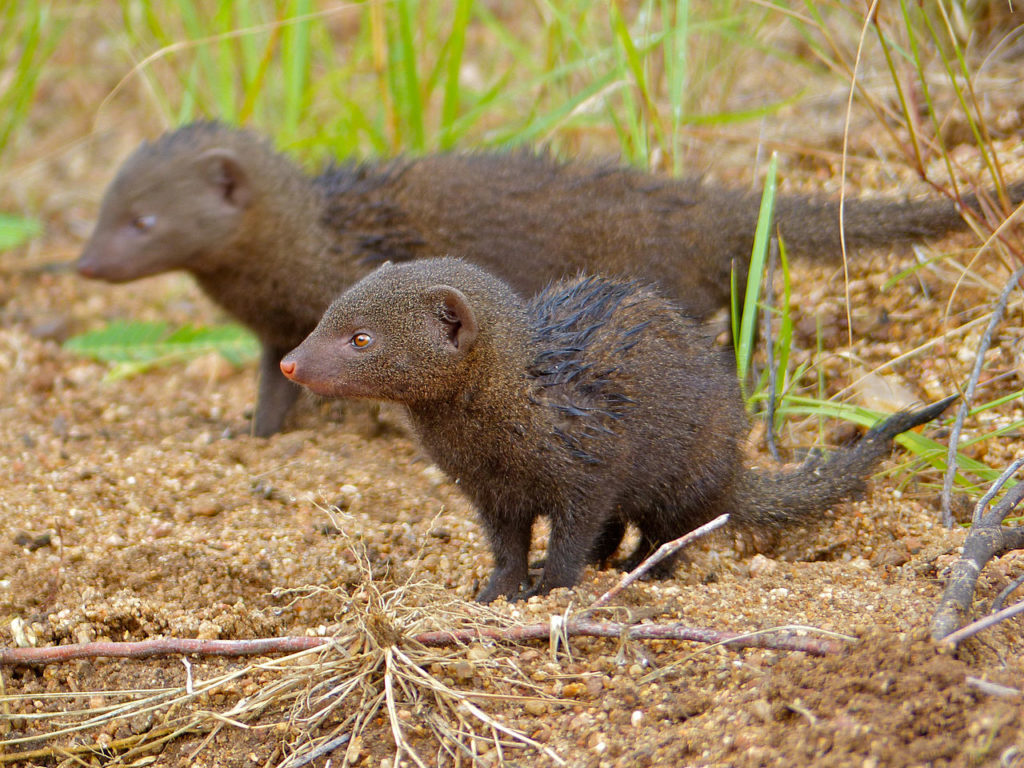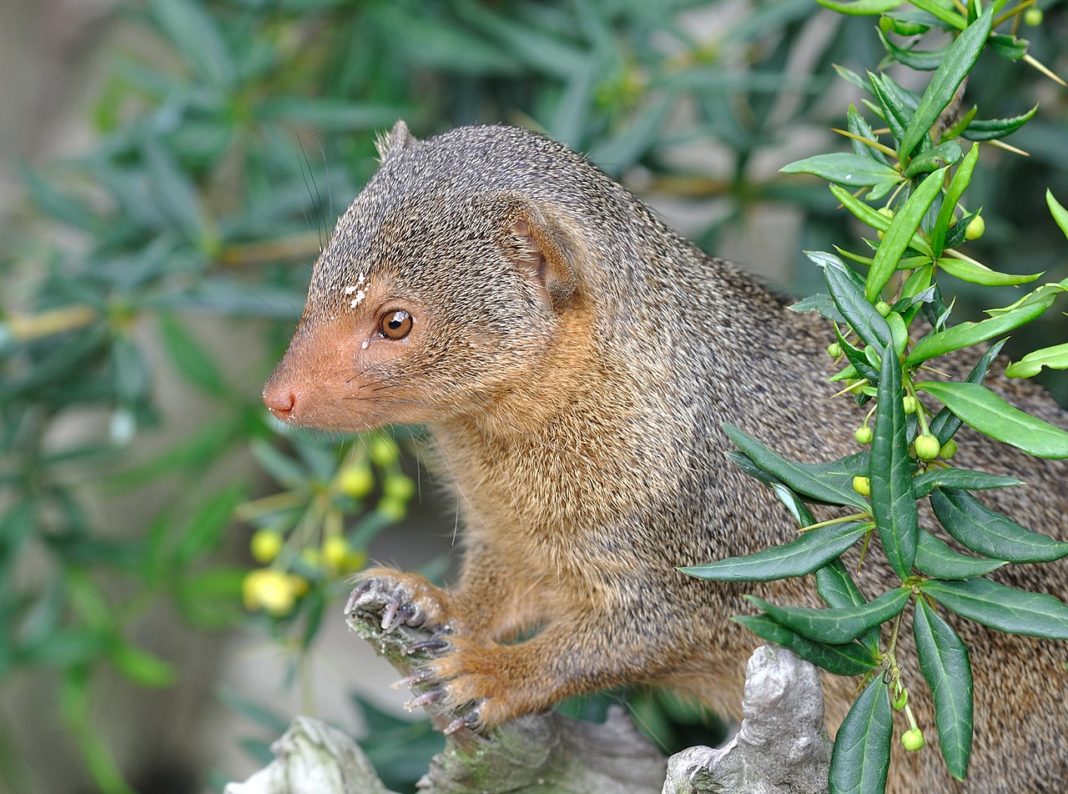The dwarf mongoose (Helogale parvula) is a mongoose species native to Angola, northern Namibia, KwaZulu-Natal in South Africa, Zambia and East Africa. It is part of the genus Helogale, along with the Ethiopian dwarf mongoose.

The dwarf mongoose is the world’s smallest mongoose species. The common dwarf mongoose has soft fur ranging from yellowish red to very dark brown. It has a large pointed head, small ears, a long tail, short limbs and long claws, with a body length of 16–23 cm and a weight of 213–341 g.

It inhabits primarily dry grassland, open forests and bushland up to an elevation of 2,000 m. It is especially common in areas with many termite mounds, its favorite sleeping place. It avoids dense forests and deserts.

Dwarf mongooses are highly social animals, living in groups of up to 30 individuals. They are also highly territorial, and each group defends a home range of about 30-60 hectares. Dwarf mongooses are diurnal, meaning they are active during the day. They spend most of their time foraging for food, which consists mainly of insects, but also includes small rodents, reptiles, and birds.
Dwarf mongooses are an important part of the African ecosystem, helping to control populations of insects and other small animals.
According to the Internet















